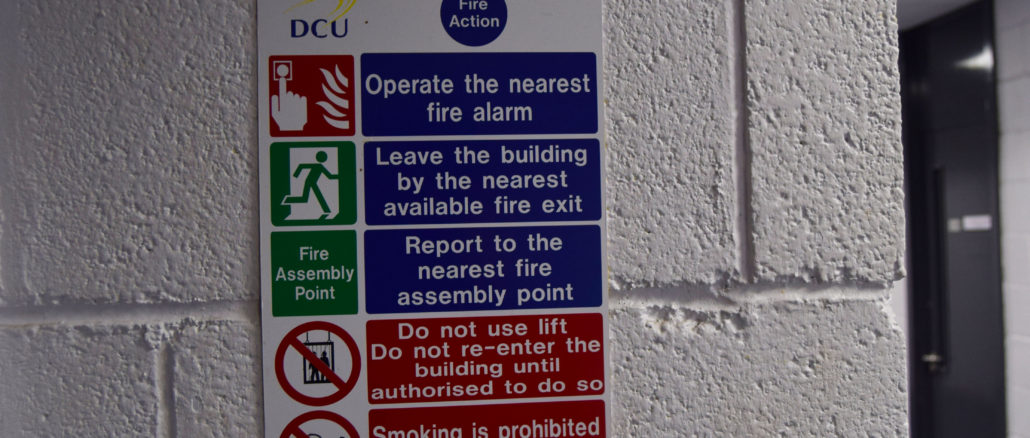
[dropcap]We[/dropcap] have all experienced a time when we were sitting in a classroom, a lecture hall or at work and heard the loud ringing of a fire drill. According to a survey carried out by the Association of Secondary Teachers Ireland (ASTI), some schools have up to five fire drills a year while the majority of schools run fire drills two to three times a year.
There was a fire drill several weeks ago on DCU campus. I observed peoples behaviour during the drill and later questioned some students on how they reacted to the drill. The majority of people in a room without a lecturer remained in their seats, continued to do their work or chat with friends. Students only left the building when staff came around urging them to evacuate.
When asking students why they didn’t leave immediately after the alarm sounded they replied, “It’s only a drill. I have stuff to be doing”. One said, “I don’t have time for fake drills”.
Of the twenty students I spoke to, all of them took some or all of their belongings with them, ignoring the fire procedure of leaving all items behind.
An average of 36 people per year have died from a fire in Ireland, from 2005 to 2014. The majority of these fires happened in the home, and three out of the ten of them began in a bedroom.
Many of the students agreed to having a relaxed reaction when they hear the sound of a fire alarm. They will either stay where they are if they are in a public building or take their belongings and leave.
It is possible, that the over procedure of drills in schools, has made students too accustomed and relaxed with fire drills now. So, now they do not react in an urgent or serious way.
The current legislation of the Fire Services Act of 1981 and 2003 states that owners and occupiers have a ‘duty of care’ to provide reasonable safety measures for their premises. Additionally, they must prepare and provide appropriate fire safety procedures to ensure the safety of persons on such premises.
So, how can the excessive use of fire drills be regarded as an appropriate fire safety procedure if it is making students be less responsive to an actual fire alarm or drill.
Personally, I would respond to an alarm a lot faster if it was something I had never heard before, but had been informed about what to do when i did hear it.
The amount of drills should depend on the level of risk in the building, according to Safelincs advice on the importance of fire drills.
Although the excessive use of fire drills can make people disregard them, they are important. They are necessary to test alarms and ensure that other equipment work, such as fire door retainers and LED emergency lighting.
According to statistics provided by fire services across the country and published by the Department of the Environment, cigarettes were suspected as the leading cause of fires followed by electrical appliance.
Laura Horan



Leave a Reply